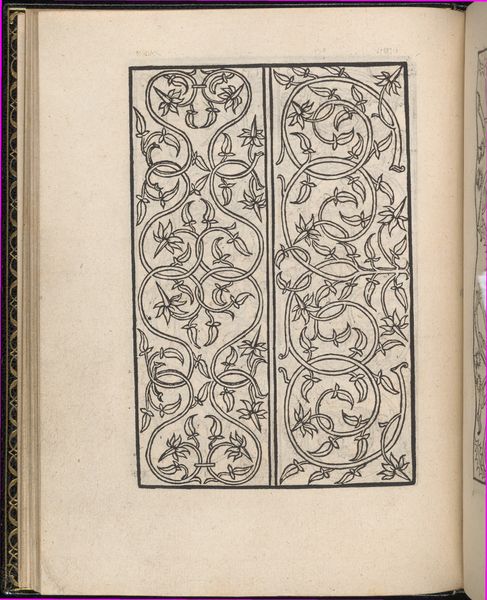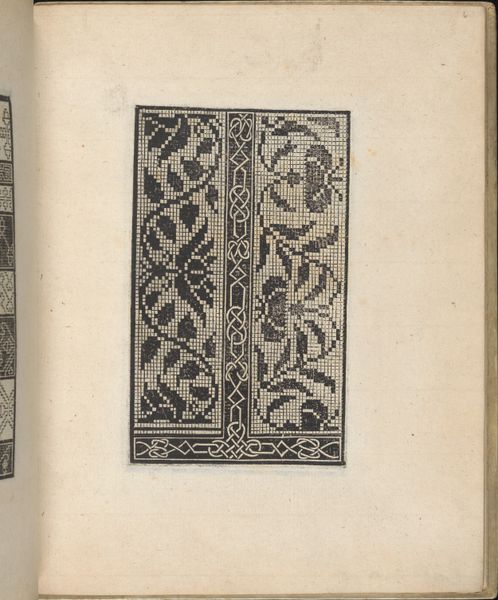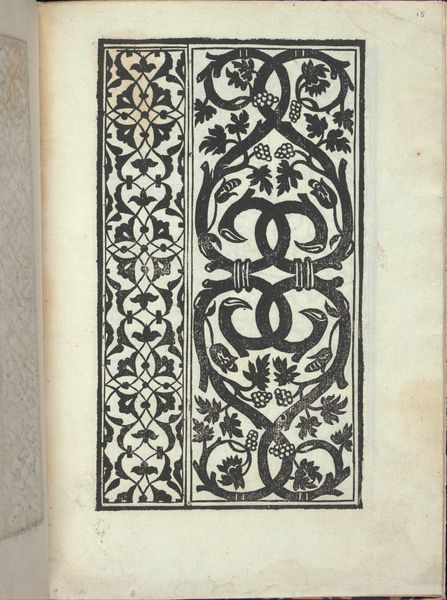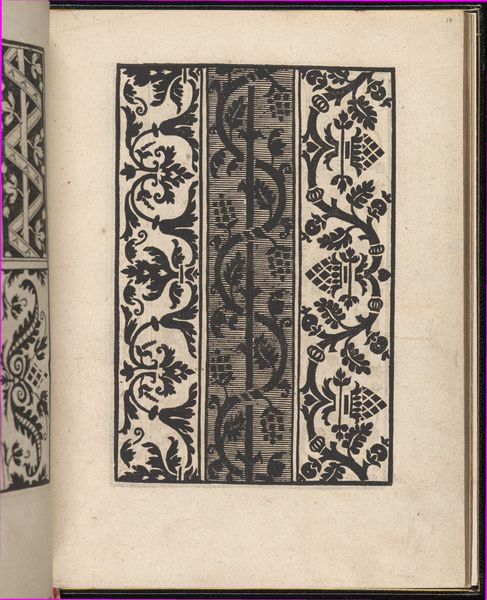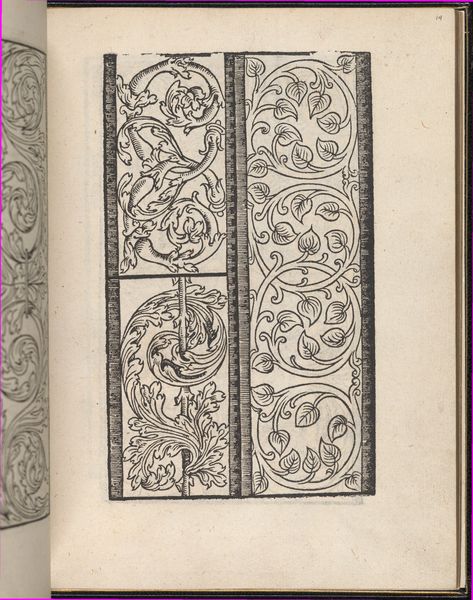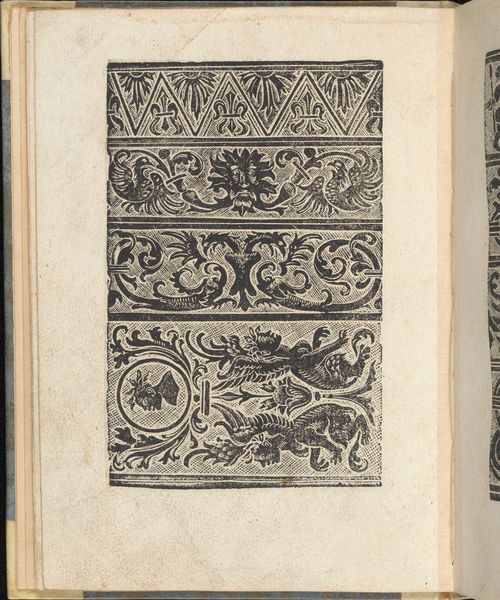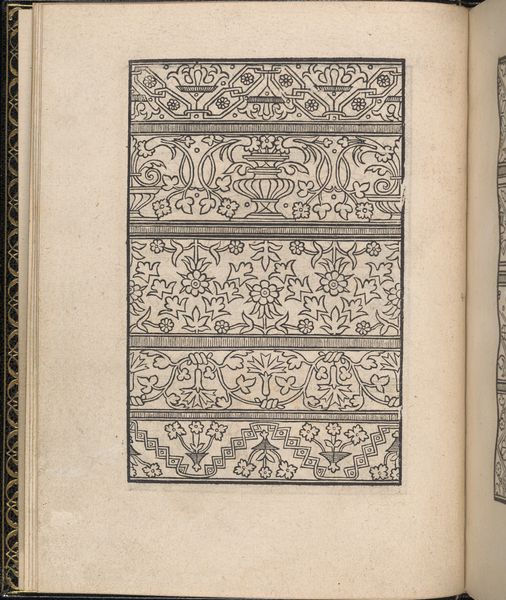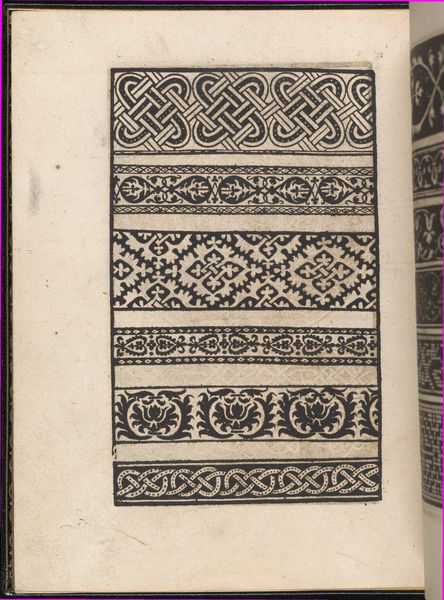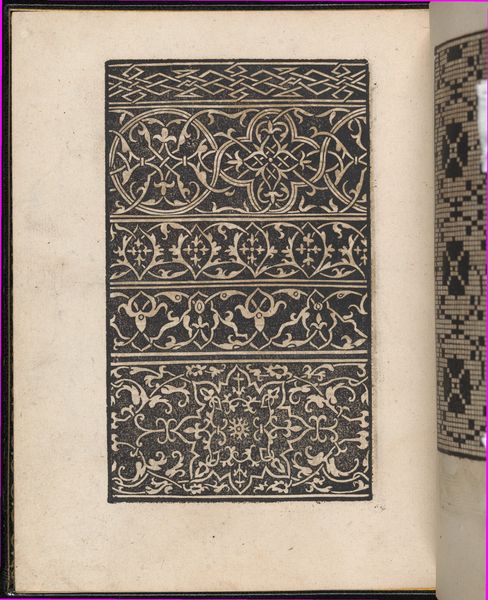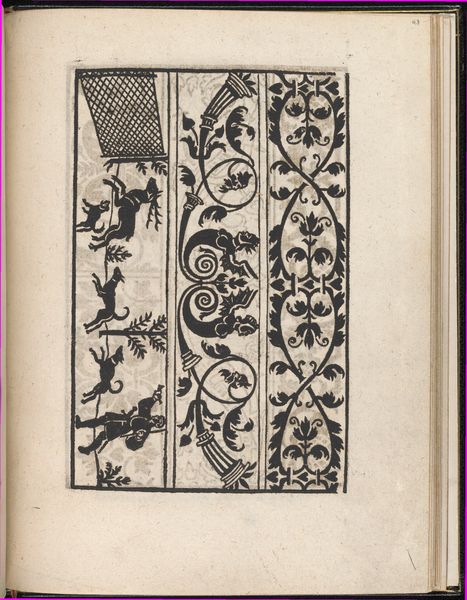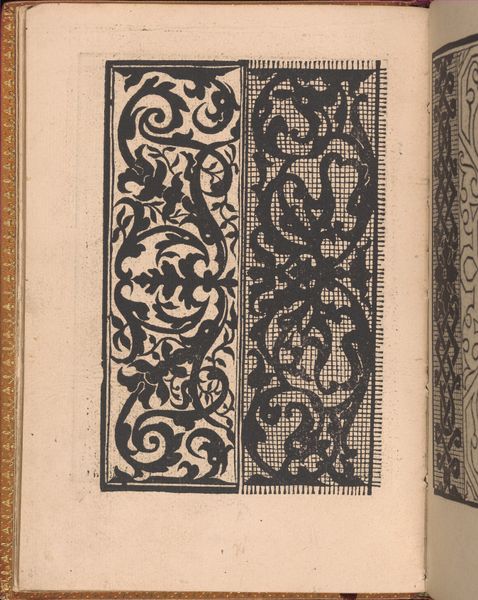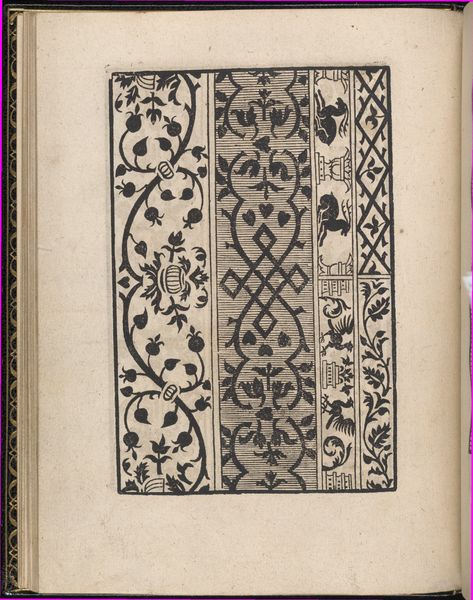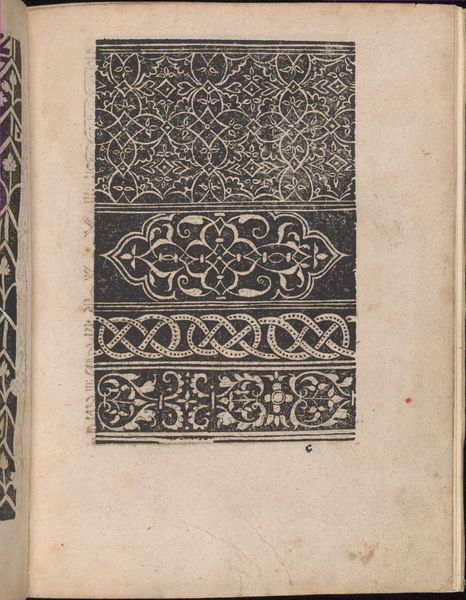
Page from Ein new kunstlich Modelbuch...(Page 43v) 1544
0:00
0:00
drawing, graphic-art, print, paper, woodcut
#
drawing
#
graphic-art
# print
#
book
#
paper
#
11_renaissance
#
woodcut
#
northern-renaissance
Dimensions: Overall: 7 11/16 x 5 7/8 in. (19.5 x 15 cm)
Copyright: Public Domain
Curator: Before us is a page from "Ein new kunstlich Modelbuch...(Page 43v)", created in 1544 by Peter Quentel. The work, a woodcut print on paper, currently resides at the Metropolitan Museum of Art. Editor: I'm immediately struck by its stark elegance. The black ink against the aged paper creates a crisp contrast. It’s amazing how graphic it feels even for its time. Curator: Indeed. Quentel's skill in simplifying natural forms into geometric patterns is quite evident. Observe the interplay between positive and negative space, how the floral and foliate motifs are rendered with such precision and economy of line. Semiotically, each repeating element builds a visual lexicon for the Northern Renaissance. Editor: But let's consider the book itself. A "model book" speaks directly to the labor and production of textiles and other crafts. Each page offered templates, practical instructions for artisans. What kind of access did this provide craftspeople to design? Curator: An excellent point. It suggests a wider distribution of aesthetic principles beyond the elite patronage system. Editor: And what about the physical act of woodcutting? The skill, the tools, the time...it speaks of dedicated workshop practices and apprenticeships and even, a business endeavor that supports his craftsmanship. We can see the work of hands in this replication of pattern across pages. Curator: True, yet within each block, we discern a deliberate artistic choice. It’s in how those elements are structured into balanced but individual vertical panels. It’s not just utility; the placement, proportions – everything forms its own, unified aesthetic. Editor: Perhaps its success lay precisely in merging functional utility with an appeal for artistic form. Making art not only decorative but also, a means of production itself. The print is less an object of beauty, but an aid to other acts of creation. Curator: A perspective duly noted! This work's enduring charm, as we are ending this description, derives not merely from historical content but also formal synthesis. Editor: It becomes not just what we see here in this case, but also about a history and set of future-aimed, crafted potentials for everyone it would touch going forward.
Comments
No comments
Be the first to comment and join the conversation on the ultimate creative platform.
